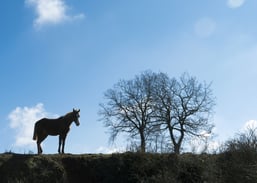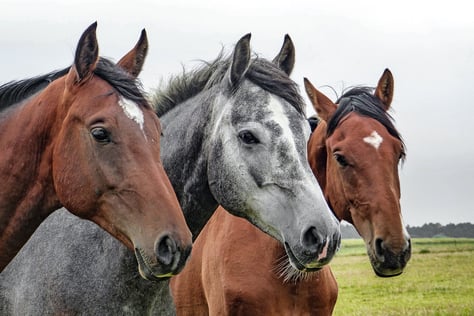While you may think spring is the best time to fertilize your pastures, it’s actually fall when grasses take in the most nutrients to store for the winter.
 The best way to give your fields the exact nutrients they need is to start by doing a soil sample test. This is especially important if you haven’t done one in the last three years. It is important to collect a representative sample from several parts of your pasture so the recommendations you receive from the analysis are applicable to your entire pasture and not only a small area. Your Conservation District or Extension program can provide you with a list of labs that perform soil testing.
The best way to give your fields the exact nutrients they need is to start by doing a soil sample test. This is especially important if you haven’t done one in the last three years. It is important to collect a representative sample from several parts of your pasture so the recommendations you receive from the analysis are applicable to your entire pasture and not only a small area. Your Conservation District or Extension program can provide you with a list of labs that perform soil testing.
After testing, the lab will provide a complete report, including soil nutrient levels and the soil’s pH. Maintaining proper soil pH, the measure of the acidity of soil, is essential to the production of healthy forages. A pH of less than 7 is acidic and can be a problem for plant health and productivity because acidic conditions limit the availability of many soil nutrients. Adding lime increases the pH. Your soil test report will also provide you with soil fertility recommendations that are valid for three years. The three primary nutrients on your report will be nitrogen (N), phosphorus (P), and potassium (K). Fertilizers will have the percentage of these nutrients listed on the bag. Just match them to your report’s recommendations.
Applying fertilizer can take time and effort so make sure you select the right one for your pasture. You can use either inorganic or organic fertilizer. Organic fertilizers work more slowly over time. Composted manure and other organic sources also supply necessary trace mineral nutrients. Inorganic fertilizers provide rapid nutrition in a burst, a bit like drinking an energy drink. The result is more evident in a shorter time, but may not last through the entire winter when grasses need it most. Another feeding may be necessary in the spring.
Some barn owners worry about the safety of spreading fresh manure for its nutrients on their pasture. Spreading manure is best done if you have a lot of land so you only add a thin layer and if you use a manure spreader to help break it up. Manure should only be spread on pastures that are being rested from grazing by horses so as not to ingest any parasites in the fresh manure. Spring and summer work best for adding manure. Fall and winter cold may prevent the nutrients from being absorbed while the rain or snow wash away what your grass needs. To make the best use of your manure, consider composting before spreading



